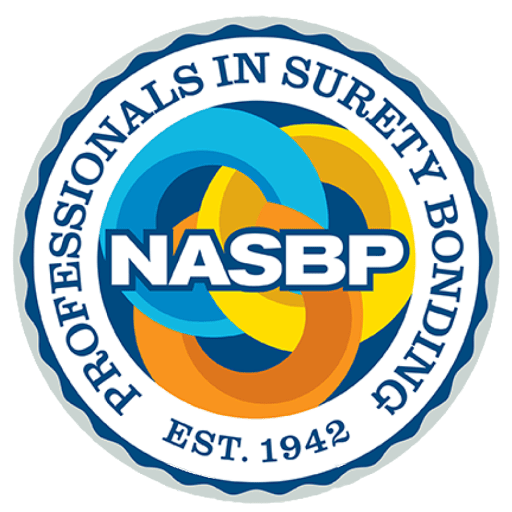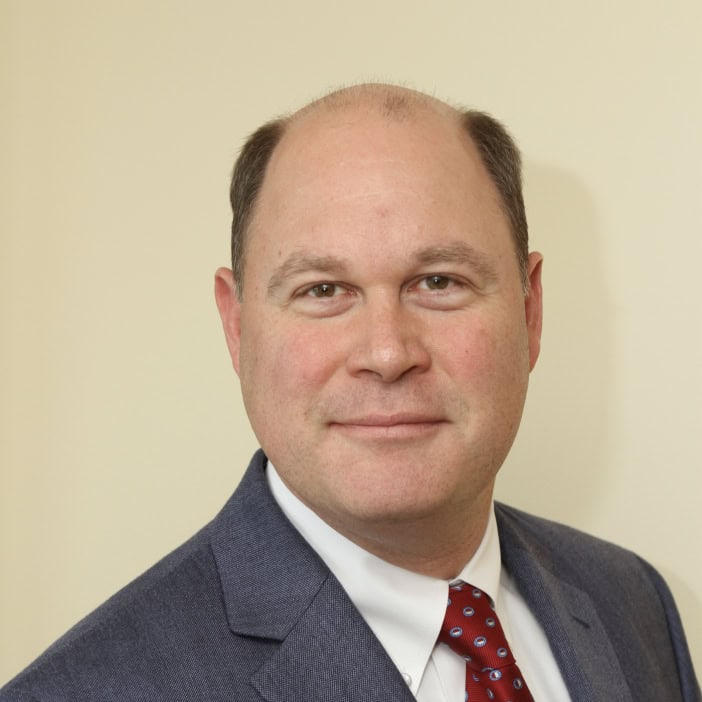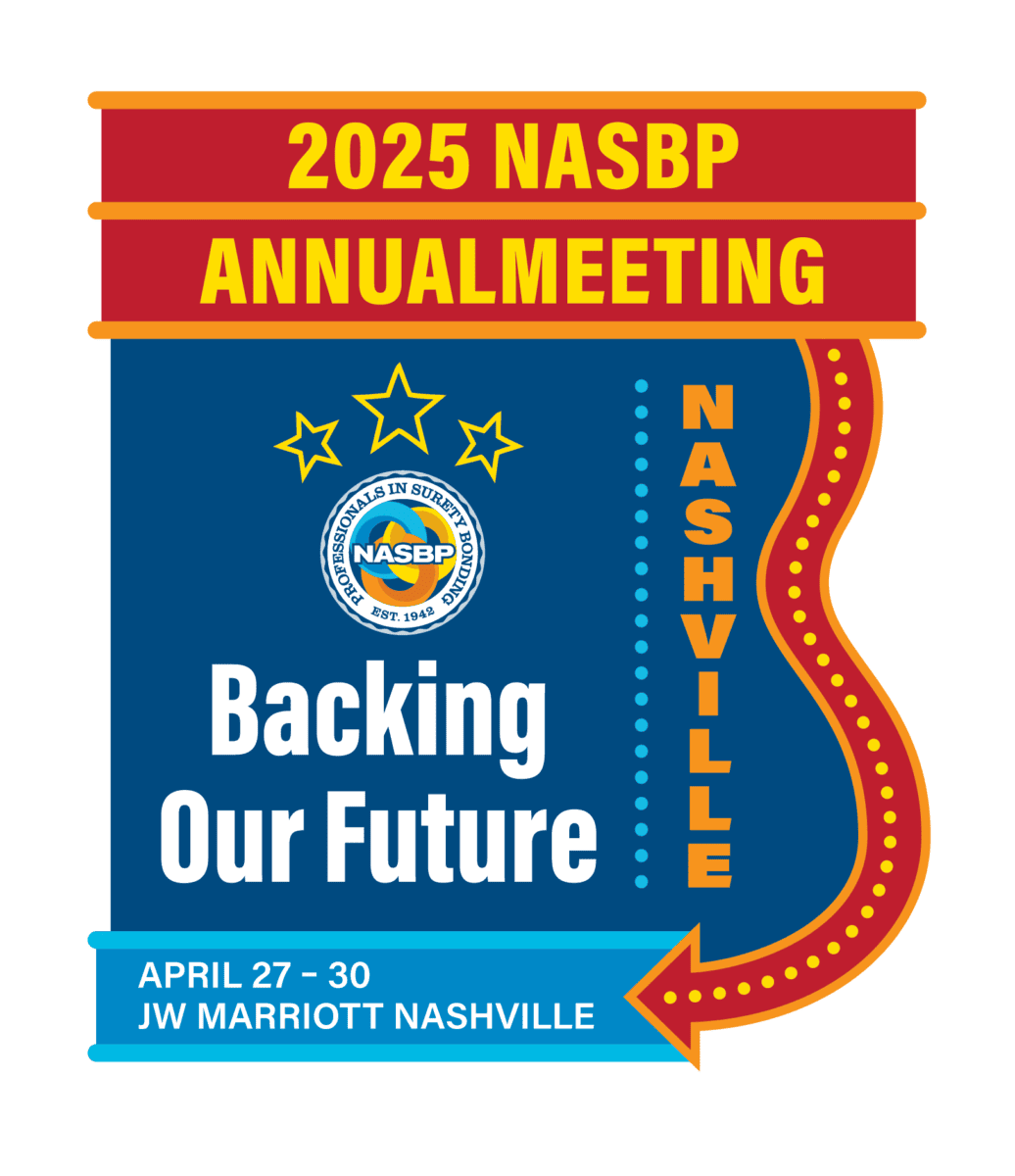|
Investment in Our Future: Update 2006 At the 2005 Mid-Year Board of Directors meeting, the leadership of NASBP approved the creation of a new position at NASBP: General Counsel and Director of Government Relations. I am pleased to report that we have concluded our search and that Mark McCallum has decided to join the NASBP team, effective February 21. Mark is presently the Senior Counsel and Director of Programs and Industry Relations at the Associated General Contractors of America (AGC). He has been with AGC since 1998, and served four years with the American Institute of Architects prior to AGC. Mark brings a wealth of knowledge about the construction and surety business to the position, as well as a passion for advocacy. He is an excellent communicator, author and team player. We were very impressed by the fact that he wanted the job and pursued it enthusiastically. NASBP received a great deal of interest in the position. Qualified candidates viewed NASBP as a very professionally managed association that required the highest level of competency. I’d like to ask you to join me in extending our compliments to the staff in Washington DC who represent our interests so well; they play a big role in maintaining that reputation. Dick Foss, in particular, coordinated a very thorough search for this candidate, and was fortunate to have several applicants to choose from. In Mark, we have selected someone that is easy to talk to, a quick study, energetic, and well liked. We promised you that we would strengthen our profile and capabilities through this hire, and are very excited to have the opportunity to work with Mark and Dick to ensure that we achieve that goal. Annual Meeting and Expo – Orlando, FLBy now, you should have received the initial notice of our Annual Meeting, to be held at Disney’s Grand Floridian in Orlando, Florida from May 7 – 10, 2006. The program features Michael Useem, Professor of Management and Director of the Center for Leadership and Change Management at the Wharton School at the University of Pennsylvania. Surety and Construction Industry leaders will address the topics of “Financial Analysis in the 21st Century” and “Subcontractor Risk Analysis”. We have contracted with the Disney Institute for a special presentation on Loyalty, which promises to be a substantive and meaningful piece of the program. Eric Alexander will speak at the Awards Breakfast on the wonderful experiences he has had while working with physically handicapped children in challenging wilderness environments. We have a FANTASTIC party scheduled for Tuesday night that will be family-friendly, and, of course, our website provides a link for all that you would like to do at the Disney World Resort. The Program Committee, comprised of Larry McMahon (Chair), Terry Cavanaugh, Bill Waters, Patrick Pribyl, Susan Hecker, John Adams and Chris Leach have listened to your suggestions and have designed an excellent program. My thanks to each of them for the quality of their effort! We hope to see you there! Industry Outreach EffortsAs we begin the New Year, please join your NASBP leadership team and make a concerted effort to meet with Owners and explain the surety product in 2006. SIO has an abundance of tools to help you, and if each of us makes an effort to reach out to those that need our products, we can have a material impact on the continuously improving health of our Surety Industry! Every Member of our Association can make a difference when making an effort to promote the outstanding value that the surety product delivers. Ed Heine is Executive Vice President for the Payne Financial Group in Missoula, MT. He can be reached at eheine@pfgworld.com.
Federal Court: A Bid Bond Means What It Says
The Court of Federal Claims recently decided the case of Aeroplate Corporation v. United States, 67 Fed. Cl. 4 (2005), involving a low bidder who was disqualified. The government said that its bid was not “responsive” because the bidder’s corporate seal was missing – which ended up not being a true defect – and because the surety on the bid bond was questioning whether it would honor the bond, since the bid submitted was over the authorized amount. Further, the surety told the government that it would not issue a payment or performance bond and the contractor admitted that it didn’t have an acceptable alternate surety lined up for these final bonds. Based on all this, the government said that it was justified in throwing the bid out. The Court disagreed. It said that as long as the bid bond was valid on its face, the government had no business questioning its enforceability. If the contractor could not produce final bonds, the remedy would be to call on the bid bond. If the surety on the bid bond refuses to honor it, the remedy would be to sue that surety. The Court used sound, common-sense logic: if after-the-fact comments from a surety could justify disqualification, the whole purpose of a bid bond could be lost. “Were the court to rule that [the contract administrator] could avert further delay by taking preemptive action, the door would open for any surety after bid opening and upon further reflection to call in its disinclination not to make good on an otherwise valid, authorized guarantee. The certainty and predictability of reliance on surety guarantees would be hostage to the whims of the surety.” In other words, what is to prevent a surety who sees that its principal’s bid is way too low from deciding that it won’t honor that bid bond after all? Where does that leave the government? And if the surety can back out for this reason, why can’t the bidder back out too? For all these reasons, the court ordered the government to accept the bid bond, and give the contractor the opportunity to prove that it could do the job, including finding a surety on its final bonds. If it can’t do so, my hunch is that the bid bond surety will not take the risk of refusing to honor the bid bond. NASBP’s General Counsel is Susan McGreevy of Husch & Eppenberger LC, Kansas City, MO.
The Pennsylvania Turnpike Commission has announced plans to implement an electronic bidding system. The word on the street is that test bidding will hopefully begin in March 2006. However, according to Jeff Wilson, PA Turnpike Commission’s Engineer Project Manager, “There are no firm dates yet for our release, but we do encourage Business Partners to register as soon as possible.” Registered business partners will have access to the latest announcements, news, and updates. For more information or to register as a business partner, please visit PA Turnpike’s web site.
NASBP Taps MarshBerry to Facilitate the Leadership Development and Perpetuation Planning for Members Last year, NASBP and MarshBerry developed two surveys to facilitate the leadership development and perpetuation planning of NASBP’s members. A new financial and bond specific Benchmarking Survey was developed specifically for members of NASBP to allow them to measure their agency’s profit, operational and equity perspectives against those of their peers, as well as the overall insurance industry. The benchmarking output provided members with a ranking for their agency based upon a scale of 1-10, the agency’s performance, the average NASBP performance, the best 25% of NASBP member performance, an insurance industry average, and the best 25% of the total insurance industry. The output also illustrated bond specific information relative to NASBP members only. The second survey, “Perpetuation Preparedness Survey”, was a complimentary on-line survey, which allowed members to gauge their agency’s readiness for internal perpetuation while providing immediate feedback on areas that may need attention. The results of both surveys, which were presented at NASBP’s Annual Meeting in San Diego and at the Regional Meeting, can be found via the attachments below. For more information, please contact Dick Foss at (202) 686-3700.
_____________________________ Marsh, Berry & Company, Inc., founded in 1981, is a management consulting firm for the financial services industry and the preeminent provider of consulting services for independent insurance agency owners and brokers. Services include agency valuations, perpetuation planning, compensation strategies, financial management, strategic planning and mergers and acquisitions. MarshBerry.com, an on-line agency management resource, can help NASBP members improve sales, boost employee performance and measure their value.
To keep membership current on automation and technology issues and products relative to surety; be a resource to other NASBP committees, as needed; work with SAA e-Business Advisory Committee on items of mutual concern; work with ACORD in the development and implementation of surety standards; and, in an effort to encourage an open standard, establish and maintain relat NASBP’s AnT Committee has been actively working toward its Mission: ionships with Obligees as they develop their electronic bond processes. The Federal Highway Administration Agrees to Distribute eProcurement Guidelines to State DOTs For the past 18 months, NASBP’s Automation and Technology Committee (AnT) has worked with The Surety Association of America (SAA), the Associate General Contractors of America (AGC), the Associated Builders and Contractors (ABC), the American Road & Transportation Builders Association (ARBTA), the American Subcontractors Association (ASA), the Construction Management Association of America (CMAA), and the Federal Highway Administration (FHWA), to draft, review, and finalize a set of common principles addressing the use and impact of electronic methodologies in the procurement process. The final document, eProcurement Bidding/Bonding Guidelines, will now be used to provide guidance to public owners implementing electronic procurement. The methodologies and system characteristics represent the interests of all parties. The FHWA has agreed to push the Guidelines out to all state departments of transportation, which will allow the surety/construction industry to take great strides toward decreasing the lack of standardization of electronic bidding/bonding and filing of bonds in the DOT space. The Guidelines have been approved by NASBP, SAA, and the majority of the construction-related organizations who participate as part of the Coalition. The Coalition is waiting on approval from the AGC before providing FHWA with a copy. The Guidelines will be posted on the joint NASBP/SAA automation website in late February. NASBP and SAA Work Joint Technology Web Page to Promote Industry AwarenessThe NASBP/SAA Joint Automation Committee, which is comprised of members of NASBP’s AnT Committee and the SAA eBusiness Advisory Committee (eBAC), continues to maintain a joint web page. The page is accessible through both associations’ websites at http://www.nasbp.org/www.surety.org/automation/index.html. One of the many objectives of the Joint Automation Committee is to research the implementation of electronic bidding and bonding programs on a state-by-state basis and look for opportunities to provide input to Obligees as they develop their electronic processes. A new feature of the web site is an online status report on electronic bonding activity among state DOTs. AnT Committee Aims to Provide Technological Enhancements to NASBP’s “Members and Affiliates Only” Web SiteAs reported in the June issue of Pipeline, a new member benefit was rolled out to NASBP’s Members and Affiliates — the new and improved online membership directory. The latest addition to this online tool is a series of reports that can be downloaded and printed to replicate directory information exactly as it appeared in the old hard-copy NASBP directory; however, the online reports provide real-time, up-to-date, date-stamped information. To download one or all of the reports, please login to the “Members and Affiliates Only” website. Password authentication has been added to NASBP’s web site. Now Members and Affiliates can retrieve their login information for the “Members and Affiliates Only” site via an automated email message 24/7. AnT Committee Focuses on Industry Challenges in 2006 Many obligees will continue to want to develop proprietary systems thus increasing the lack of standardization of electronic bidding and filing of bonds. The AnT Committee acknowledges that the lack of standardization in the electronic procurement process will force agents to comply with different processes that may vary greatly, and increase the costs associated with the electronic process. The Committee also recognizes the increased potential of agents inability to keep pace with the influx of new electronic procurement processes, which could ultimately lead to their reliance on the surety or another agent to meet their clients needs. The AnT Committee and Susan DeCourcey will continue to lobby and educate owners on the process to accept multiple electronic bonding solutions that meet the criteria outlined in the Guidelines. The AnT Committee Needs Volunteers We encourage all interested parties to join the AnT Committee. Simply supply us with your knowledge of surety and we’ll plug you in! For more information, please contact Susan DeCourcey at (202) 464-1177 or via email at sdecourcey@nasbp.org.
Pipeline is produced monthly by the National Association of Surety Bond Producers, 1828 L Street, NW, Suite 720, Washington, DC 20036-5104, 202/686-3700, Fax: 202/686-3656, www.nasbp.org, Internet e-mail address: info@nasbp.org To read the online version of Pipeline, please go to http://www.nasbp.org/pipeline_01_06/text.htm Disclaimer: This information is provided for educational and informational purposes only and is not intended to serve as legal advice. Readers are cautioned to consult their legal counsel on any specific matters. |
March 2006
|
Industry News of the Day For the past several weeks, members of NASBP’s Executive Committee have been meeting with the leading carriers, reinsurers and reinsurance brokers to discuss their respective results and outlook for the future. The information will be incorporated into the State of the Industry report that will be presented by Dick Foss at the Annual Meeting in Orlando in May. Here are some of the key themes that we have been hearing: · The surety industry made a good recovery in 2005 and most providers were pleased with their results, in all lines of bond business. · Demand for the surety product is robust; owners recognize the value of our product and several have seen an increasing demand in the private sector for bonds. We were very encouraged to hear this news, which was delivered with enthusiasm by many. · There has been a marked increase in the industry’s investment in new talent, training programs and underwriting tools, including credit scoring, sales training and technology. · Capacity, in all markets segments, is stable, and improving. Continuing improvement is needed in this area. · One of the biggest challenges for carriers is their expense ratio. Producer compensation based on performance will receive continuing emphasis, as will product pricing. · The underwriting environment continues to be disciplined, and most expect that to continue throughout 2006. Dick Foss will elaborate on the data in his report, but we wanted to give you a brief overview of what we have been hearing. It is encouraging! In addition to the ‘Industry News of the Day’, I’d like to focus on Mark McCallum, NASBP’s General Counsel and Director of Government Relations. Mark is a valuable resource for our members, and has made a very positive impression in his initial month with NASBP. I have asked Mark to share his perspective with NASBP this month. Please note his emphasis on advocacy – his remarks are properly focused! I’d like to encourage you to take advantage of Mark’s resource – he represents some of the best that NASBP has to offer! Read Mark McCallum’s Letter
Ed Heine is Executive Vice President for the Payne Financial Group in Missoula, MT. He can be reached at eheine@pfgworld.com. |
||
Contractors providing construction services to the federal government bear the burden of being cognizant of a broad range of laws and regulations that address, in whole or in part, the acceptability of project costs and billing practices on federal projects. Recently, several cases highlight that the federal government may employ anti-corruption statutes in surprising ways to scrutinize the propriety of contractor charges and invoices. In these cases, government attorneys employed the federal “kickback” statute in an effort to assess penalties against construction contractors. This statute refers to …any money, fee, commission, credit, gift, gratuity, thing of value or compensation of any kind which is provided….to any prime contractor, subcontractor,…for the purpose of improperly obtaining or rewarding favorable treatment… in connection with a prime or subcontract (41 U.S.C. § 52). In short, this statute makes it illegal to give kickbacks and to take them. Moreover, to prove a violation of the statute, the government need not prove that it paid more as a result of the kickback. The theory is that, just as government employees should not be able to coerce vendors to pay them for the privilege of selling goods to the government, contractors (and subcontractors) who are in a position to control access to the right to sell to the government should be equally unapproachable. The quality of the product sold and its bottom-line price to the government should be the determining factors in awarding work―not who greased the palm of the person controlling the purchasing. In a notable recent case, the government took the position that a surety bond agency that rebated part of its commission on bond premiums back to its contractor-client was giving the client an illegal kickback. Even though the rebate program was not specifically related to government contracts (it was based on the total volume of premium), it certainly covered the premiums for those jobs, and the government was billed at the gross price, not the net price. In the cases I have seen, the contractors included on their first billings a specific line item amount for surety bond premiums. Then, in change orders that increased the contract price, additional amounts were included for bond premiums. Although the final net amount for the premium was probably not known to the contractors at the time the billing was done, they were aware that the rebate program was in place and that, in all likelihood, the final net amount would be less than the billed amount. However, the contractors failed to reconcile the gross and net costs and to send the government a check for its portion of the rebate. It is entirely possible that the project managers for the contractors did not even know about the rebate program. That program, in at least one of the cases, was negotiated by an entirely different subsidiary of the large corporate contractor. This, of course, meant nothing to the government or the court as the knowledge of one part of the company is imputed to all other parts (or it would be impossible to hold most corporations responsible for anything.) The contractors ended up paying a huge fine to the government, not only because submitting the invoices for bond premiums were said to be “false claims,” but also because they qualified as kickbacks. I also have heard that prosecutors are using the kickback statute to attack conduct that many subcontractors and suppliers to government contractors would never have considered: the value of fishing trips, airline tickets, concert and tournament tickets and other gifts in excess of the IRS “de minimis” standard. Government auditors have demanded that contractors give them lists of everything of value that any of their employees have received from those who have been given subcontracts, or who gave such gifts in the hope to get the opportunity to do business on government contracts. How far can this go? In the case of a surety bond premium, the amount initially billed by the agent was specifically listed in the first payment application and paid by the government, with no subsequent credit given back, so it was easy to identify. However, in many situations, a subcontractor or supplier may not know how many of its products are being pass through to a government buyer or how the contractor is charging for them. Many states also have anti-kickback laws. Although it is not likely that we will see many independent investigations of contractors for routine, marketing-type conduct, it is not unusual to find government attorneys scrutinizing such activities in the course of defending claims against the government. In fact, most of the cases discussed in this article came to light in the course of lawsuits filed by contractors to recover extra costs on government projects. As a result, when deciding whether to pursue such claims, contractors now must consider a whole new set of factors. This whole area is not so different than the subject of contingent insurance commissions discussed in a previous Pipeline article, where many state attorneys general decided that it was unfair to customers for their brokers to not disclose that they might receive extra compensation for steering business to a particular insurance company. And, in an era of front-page corporate financial and accounting scandals, the federal government’s close scrutiny of charges and billing practices is likely to continue for the foreseeable future. Your client-contractors cannot afford to be other than vigilant about all costs charged on government projects, for every charge may come under scrutiny by government auditors, and government attorneys will not hesitate to use all measures, including kickback laws, at their disposal. Article prepared by: Susan L McGreevy, NASBP Outside General Counsel, Husch & Eppenberger, LLC, Kansas City, MO.
|
Few could refute that developing an appreciation of the processes and perspectives of clients and key industry participants is an indispensable component of business success. Such a goal is at the very heart of a unique and highly successful industry program, co-administered by the National Association of Surety Bond Producers, the Associated General Contractors of America and the Surety Association of America, in which surety underwriters, as interns, are placed with host contractors to experience the business of construction contracting firsthand. Developed in the late 1980s and early 1990s, this program has placed dozens of underwriters in the busy offices of contractors, permitting them to see and to gain a better appreciation of the pace, patterns and processes that contractors follow on a daily and weekly basis. Contractors also benefit by gaining an understanding of the concerns and perspective of underwriters in assessing construction contractors. AGC member, Alberici Corporation, headquartered in St. Louis, Missouri, has hosted several interns since the program began and is a strong believer in the program. Bill Ernstrom, Alberici’s General Counsel & Senior Vice President, states, “I’m not sure who gets more out of it; this is a mutually beneficial program, increasing the knowledge of the contractor and of the underwriter.” Underwriters are placed to learn; they are not there to underwrite host contractors and are placed with contractors to which their company has no business connection. In addition, each intern’s surety company, not the host contractor, bears all travel, meal and lodging costs associated with the intern’s visit. Underwriters typically spend one to two weeks with host contractors, experiencing as many facets of the contractor’s business as possible in that span of time. Host contractors are encouraged to permit the intern to experience the contractor’s operations in the field and at the home office. For example, interns may participate in the preparation of a bid and in the post-bid review, learn how cost projections are made, and attend an onsite project meeting among key project personnel, among many other activities. The intern and the host contractor will confer and set the appropriate schedule and activities for maximum learning. A sample one-week surety intern schedule is available for download under the programs & activities section of the surety bonding portion of the AGC web site (www.agc.org). For its part, NASBP has played a critical role in finding contractors to act as hosts and in matching those contractors with interns. NASBP member, Bob Fricke, of Frank Siddons Insurance, in Austin, Texas, who has devoted his time as a recruiter and program coordinator, helping match contractors and interns over the years, relates “NASBP has had great success in facilitating these invaluable experiences for contractor and underwriter alike. I can’t think of a better way for me—or any producer—to contribute to the industry than making sure that this program continues.” Bob challenges that other NASBP members can contribute by identifying host contractor candidates. “I need the help of my fellow NASBP members to provide the names of potential hosts—we already have surety underwriters waiting for placement!” Please help with this initiative. Think about suitable host contractor candidates and inform them about the program and its benefits. If you have candidates for being host contractors, please forward that information, including a contact name and complete contact information, to NASBP’s General Counsel and Director of Government Relations, Mark McCallum, at mmccallum@nasbp.org.
|
Special thanks to all participants and the expert presenters of the ”Analyze Risk and Understand the Bid Process Workshop.” This interactive professional development program placed participants in the boots of the contractor! Truly an eye-opening experience, as Workshop contributors created their own construction companies and went through the bidding process for the Gizmo Distribution Company. The company group that came in with the lowest bid was Starks Construction and included Benjamin Burge (Howard Cowan Bond Agency, Inc.), Craig Hurst (The Buckner Group), Janina Monroe (Lockton Insurance Brokers, Inc.) and Alan Starks (American Agency, Inc.). However, the company group that came closest to an accurate bid for the job was Flex Construction/alias SWAG whose members were Brian Ball (Frank H. Furman, Inc.), James Dervin (Cory, Tucker & Larrowe, Inc.), Mike Juneau (ICW Group), Craig Payne (Arch Insurance Group) and Emily Terhune (IMA of Texas, Inc.). “Honorable Mention” goes to the other company groups: Bob the Builder; Lady Luck Construction; E-Z Construction/alias Clueless; F.B.N. Construction; Profit Construction; and last, but not least, Dewey, Cheatham & Howe Construction! NASBP appreciates the outstanding effort put forth by the presenters: Brian Wasserman, Leading Change Inc.; Leslie Shiner, the Shiner Group; Tom Padilla, Manuel Lujan Insurance, Inc.; and Paul Odum, Esq., Husch & Eppenberger, LLC. Workshop participants chose William “Billy” Welsh of Cory, Tucker & Larrowe, Inc. as the “Most Outstanding Workshop Contributor.” Plans are underway to schedule this professional development program in March 2007. More information will be available in the Fall.
|
You can’t afford to miss this much-anticipated NASBP program. Take advantage of the industry information panels, inspiring and educational keynote speakers, and the myriad of networking opportunities tha t will be available when you attend the 2006 Annual Meeting! Click on the following links to get more information. See you in Florida! Disney Grand Floridian Resort and Spa
|
Pipeline is produced monthly by the National Association of Surety Bond Producers, 1828 L Street, NW, Suite 720, Washington, DC 20036-5104, 202/686-3700, Fax: 202/686-3656, www.nasbp.org, Internet e-mail address: info@nasbp.org Disclaimer: This information is provided for educational and informational purposes only and is not intended to serve as legal advice. Readers are cautioned to consult their legal counsel on any specific matters. |
Get Important Surety Industry News & Info
Keep up with the latest industry news and NASBP programs, events, and activities by subscribing to NASBP Smartbrief.




